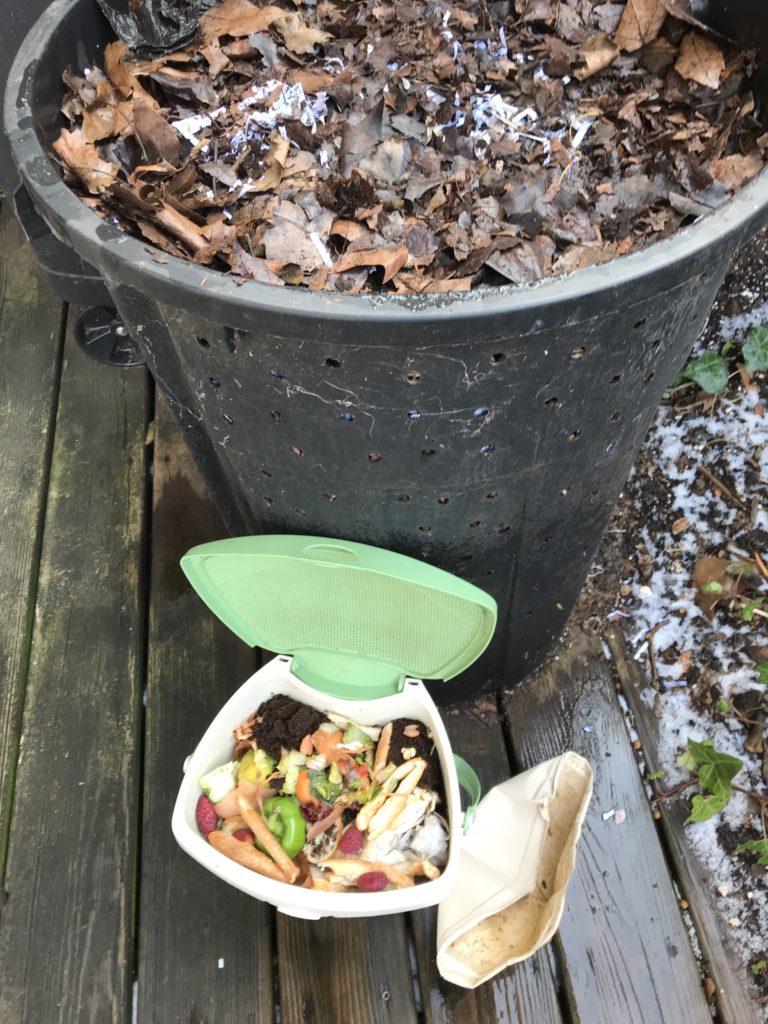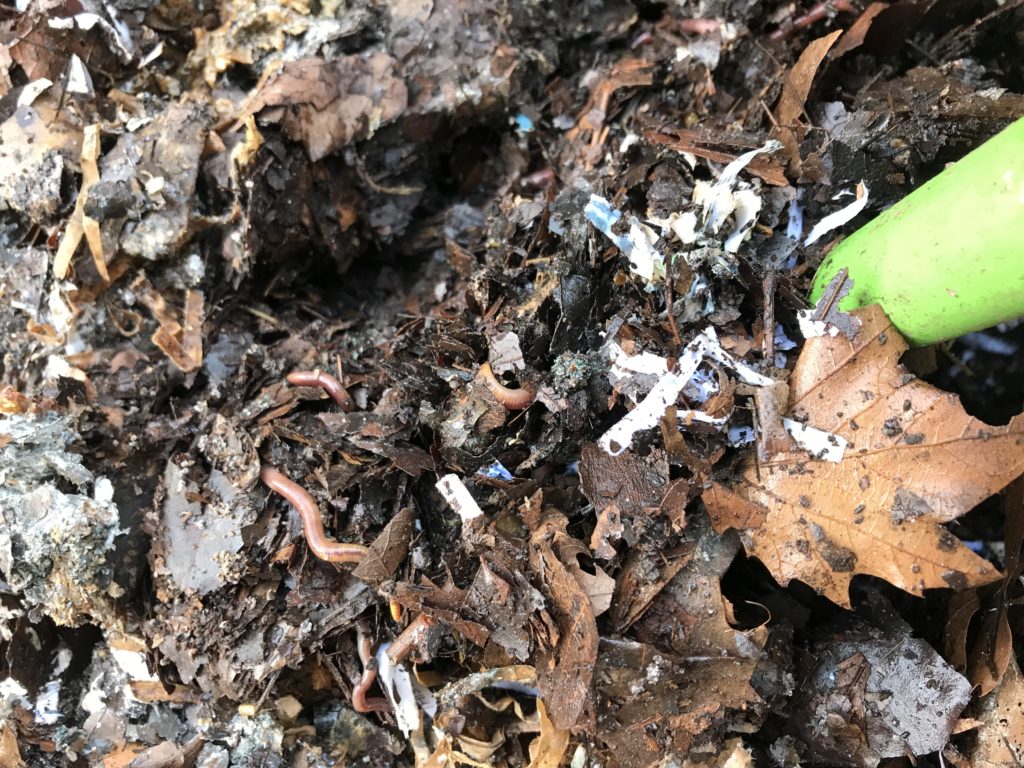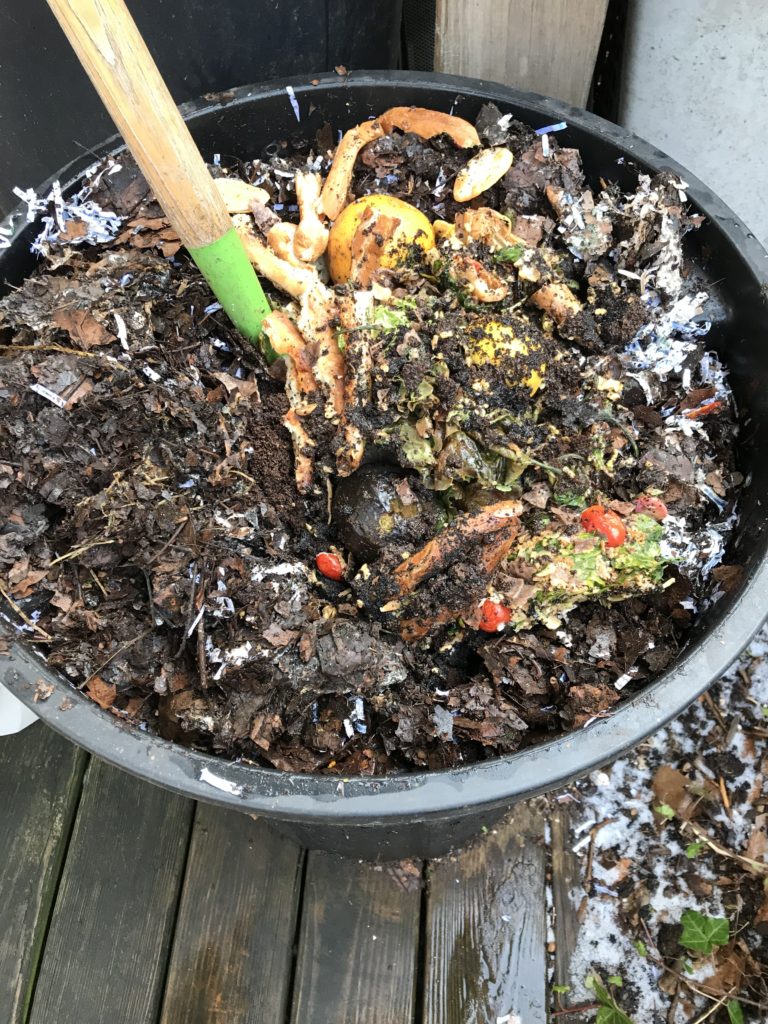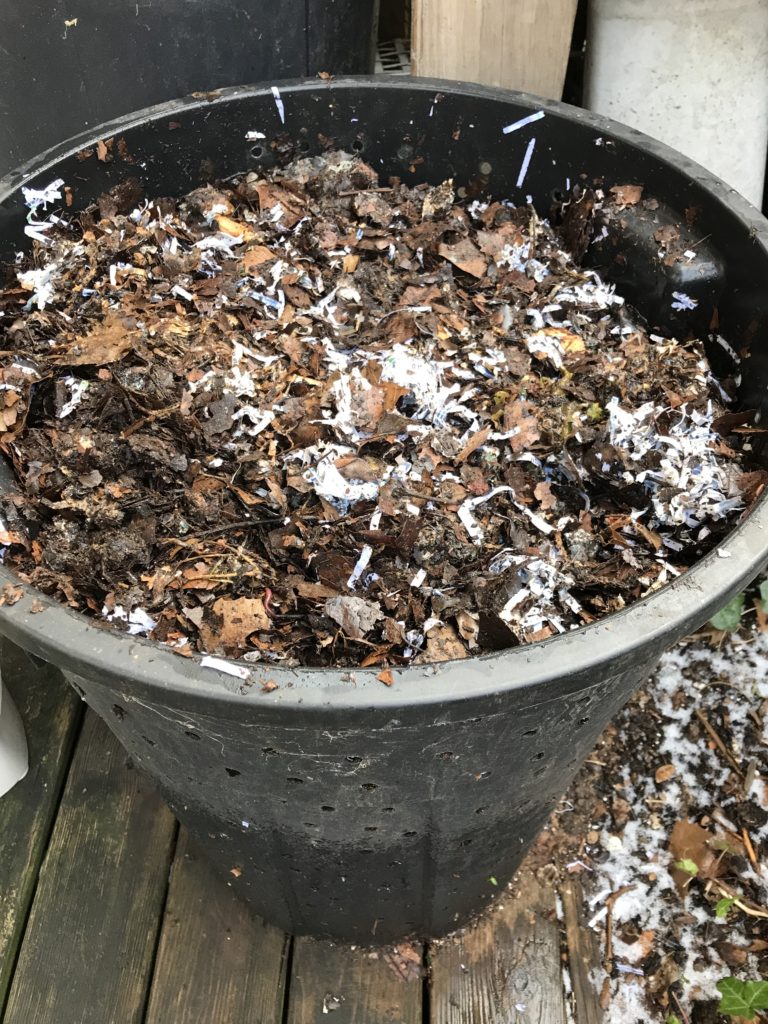
I thought the trash can composter was full, but after turning it I was able to make a small dent to add another week’s worth of scraps.



Somehow, I was able to get another week’s worth of food scraps in there- there’s no other explanation than the worms eating everything.
The composting process is on hold most of the winter until temperatures are significantly above freezing for a sustained period of time… the worms bought me time and allowed this bin to get jam packed.
Worm composting outdoors has been unexpectedly going year-round.
With a well-maintained compost pile, they’ll stick around and give you plenty of wiggle room.
